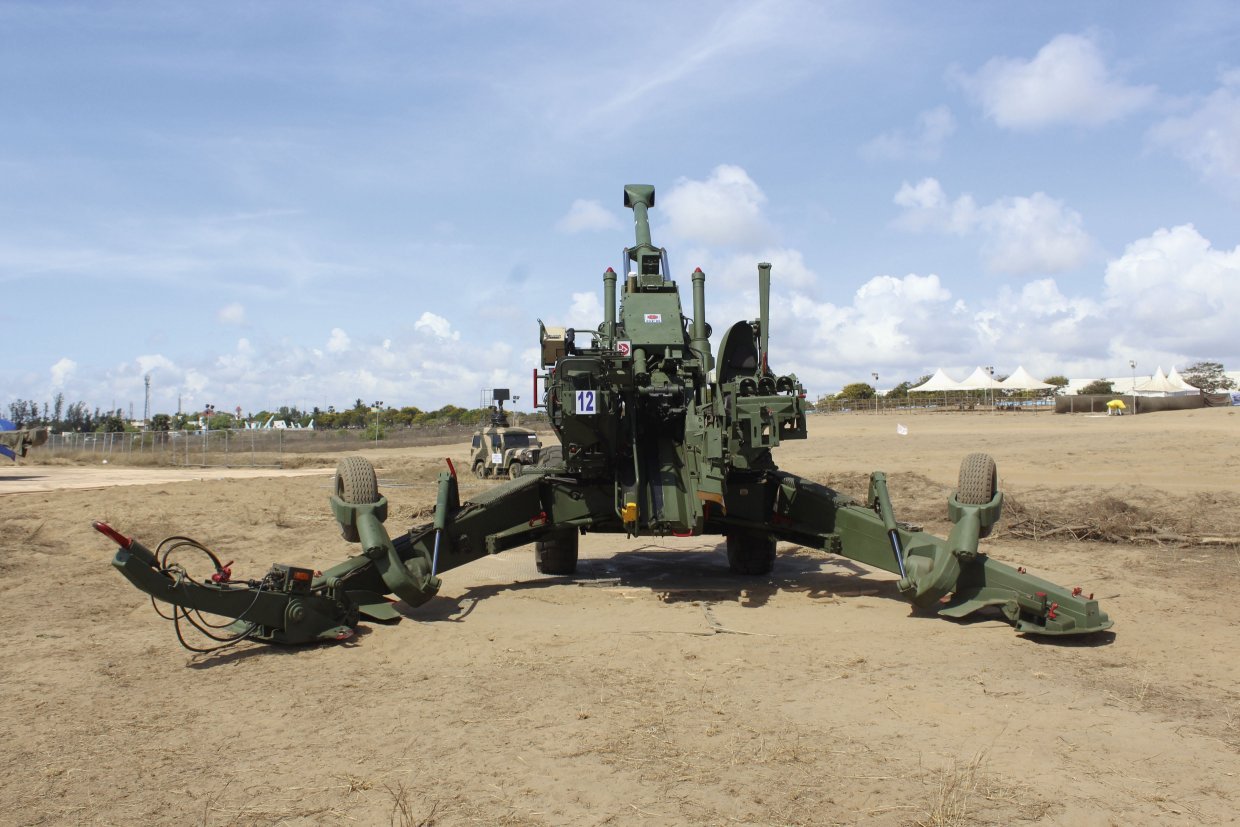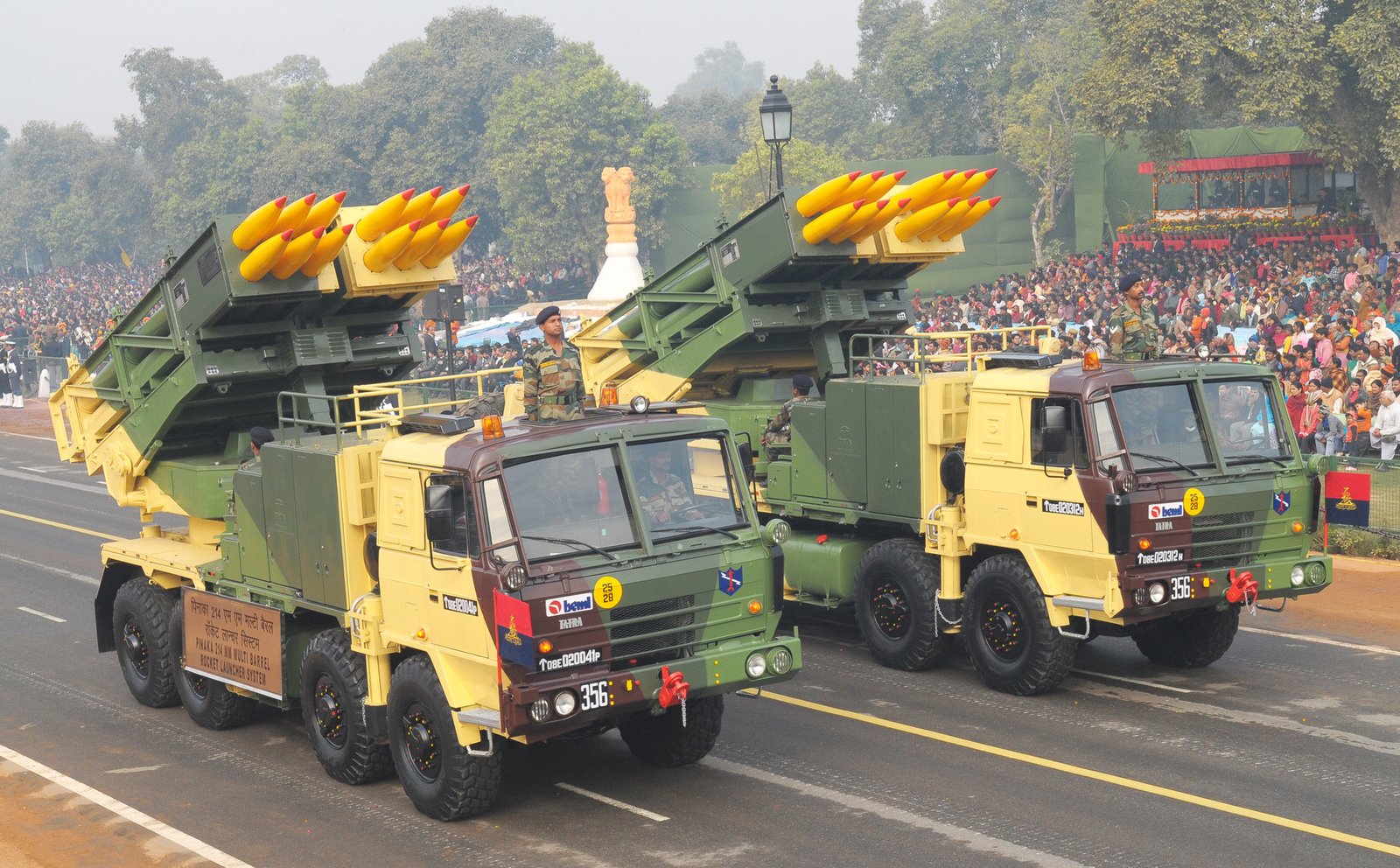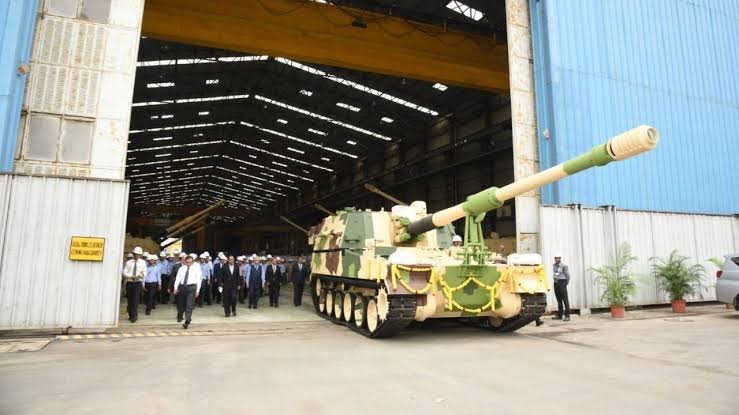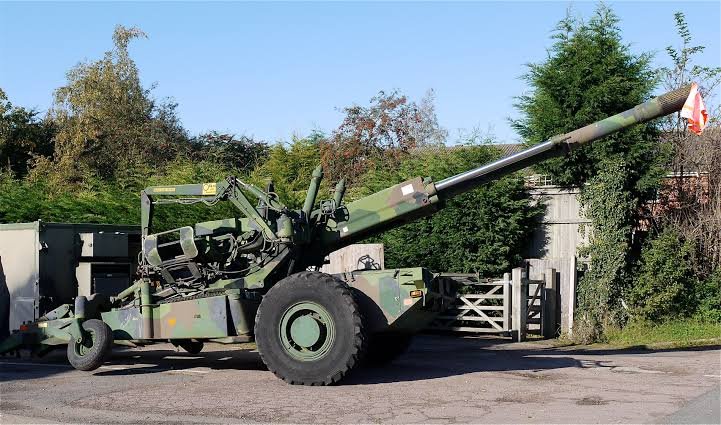
Artillery is known as the God of War. It is the destructive power of artillery regiments that wins battles and influences the outcome of wars. Napoleon, the great exponent of land warfare, had declared: “God fights on the side with the best artillery.”
Throughout history armies with better artillery have almost always emerged victorious. Pulverising the enemy’s troop and armour concentrations with sustained canon, mortar and rocket fire is a copybook strategy for winning wars. During the climactic battle for Berlin in 1945 the Russians threw an incredible 41,600 artillery pieces at Hitler’s defences. The massive salvo broke the back – and the spirit – of the German Army leading to a quick capitulation.
During the Cho La Incident in 1967 when Indian and Chinese armies clashed at the Sikkim border, it was artillery that ensured a resounding Chinese defeat. After the battle the Chinese side of the border resembled the moon, and the warzone was littered with the bodies of 340 PLA soldiers. The Indian toll was 65. The humiliated Chinese left Sikkim and withdrew three km from the border.
More recently, in the 1999 Battle of Tololing, Indian howitzers rained more than 10,000 shells on Pakistani positions. Whenever attacking Indian soldiers found themselves in a seemingly hopeless situation against well-entrenched Pakistani troops in Kargil, they would call in artillery fire. Indian Army gunners delivered canon fire with such outstanding accuracy and promptness that artillery alone saved hundreds of Indian lives.

India rearms
After more than three decades of setbacks – and criminal neglect by the political leadership – the Indian Army is gearing up for a major artillery procurement spree in order to address the crisis in its war fighting capability. The Field Artillery Rationalisation Plan (FARP) lays down the roadmap for the induction of new 155mm weaponry, comprising truck-mounted gun systems, tracked self-propelled guns, wheeled self-propelled guns and towed artillery pieces. India is likely to spend upwards of $8 billion to equip 169 artillery regiments with a mix of around 3,000 guns over the next decade.
In November 2018 India inducted its first M777 Ultra Lightweight Howitzer as part of a 145-gun agreement between the Indian and US governments.
The Army has also taken delivery of the first six of the 114 Dhanush 155 mm, 45 calibre towed howitzers that are being indigenously manufactured at the Ordnance Factory Board (OFB). The guns, which have an effective range of 38 km, are improved versions of the FH-77B Bofors. The order will be completed by 2022. The OFB anticipates an additional order for 300 more Dhanush, but in tranches to enable it to further refine the howitzers to optimise their operational efficiency. Meanwhile, the first 10 K9 Vajra guns have been imported from Hanwha Techwin of South Korea in semi-knocked down state and have been assembled by L&T in India. The balance 90 guns will be largely manufactured in the country.
In addition, the Advanced Towed Artillery Gun System (ATAGS) is also in the process of different phases of trials. This is another 155 mm/ 52 Calibre gun system being developed jointly by the DRDO in collaboration with the private sector.

Different technologies
It is understandable that after being starved for so long, the Army seems to have acquired a ravenous appetite for heavy guns. Plus, there is a favourable government at the Centre so why not expedite the acquisitions before a new dispensation arrives and chokes funds or even cancels the deals as is common in India. Better to stock up now while resources are being made available and when the political leadership is sympathetic to the military’s requirements.
However, the Army brass needs to induct artillery systems keeping in mind two factors – the evolving nature of warfare and the leapfrogging of artillery technology. As well as howitzers, India must look at tube launched rockets – also known as multiple rocket launcher systems (MRLS) – as a war winning tool.
MRLS can deliver a sustained volley of 20-40 rockets within seconds to obliterate a targeted area and practically everything that exists in that zone. In contrast, in battlefield conditions a Bofors type system can fire at most six rounds a minute.
Wheeled MLRS can shoot and scoot thereby evading the enemy’s fire finder radars which heavy non self-propelled howitzers cannot do easily.
Again, with MRLS you can achieve incremental improvements – in range as well as payload. Even with its current maximum range of 120 km, the Pinaka MRLS can destroy targets west of Lahore and Sialkot in Pakistan.
In contrast, howitzer shells on average travel 30 km; even with expensive base bleed shells they cannot land beyond 50 km.
The Russians have demonstrated the destructive power of their MRLS systems in numerous wars. Current Russian tube launched rockets have ranges over 200 km. The US Army has also understood the value of such systems and they are acquiring 300 km range systems.
More artillery units needed
Currently, the Indian Army has three artillery divisions signalling a shift in its war fighting doctrine – from offensive defence to offensive. However, in order to acquire the ability to decide the outcome of a war before a bullet is fired, India needs to raise more artillery divisions. Since the civilian bureaucracy is likely to oppose further expansion, the least the Army can do is use the current sanctioned number of divisions more effectively. For, the generals always want the latest weapons but armies ultimately have to fight with the weapons available.

Secondly, artillery should be treated as a combat arm rather than as a support arm. The aim should be to concentrate artillery fire not only on forward areas but in the enemy’s rear as well leading to a greater scale and magnitude of destruction. India should not only hit the enemy’s frontline troops and armour but also destroy his supplies, ammunition and urban infrastructure in the hinterland. This is what the Russians did before the Battle for Berlin. Some of their artillery divisions began their attack on April 20, 1945 and did not stop firing until Germany surrendered two weeks later.
Heavy and continuous suppressive fire keeps the opponent in a defensive posture – hunkered in his foxhole instead of taking aimed shots. This, therefore, limits the enemy’s overall firepower. Suppressive fire also prevents the enemy from properly assessing the attack and organising a coherent and coordinated defence or counterattack.
Another objective of heavy and sustained artillery fire is to place your mechanised regiments and infantry in an advantageous position. That is, your troop formations are concentrated without committing them on the ground. This is known as Manoeuvre by Fire.
In Manoeuvre by Fire, your troop formations may not necessarily advance under cover of the artillery offensive. Rather they may advance to support the artillery offensive. This completely transforms the nature of war fighting and can potentially disorient the enemy and unhinge his decision making process.
Also, such a strategy is the way to execute the Cold Start doctrine where long-range artillery will have to kick in the door and clear paths for the Army’s Integrated Battle Groups to pour into Pakistan in the shortest time possible.
Right mix of shock and awe
For the Army to sustain a high volume of fire its artillery divisions must have large numbers of MRLS. Currently, the Indian Army has just 316 such units. These mainly comprise the variants of the indigenously manufactured Pinaka which is being produced at the rate of 5000 missiles per year:
*Pinaka Mk1: Inducted (range 30 km)
*Pinaka Mk2: Induction phase (range 65 km)
*Pinaka Mk3: Under development (range 120 km)
In the best traditions of a successful weapon, the range and destructive power of the Pinaka MRLS is being increased incrementally. This weapon has great potential to become a scare factor for the Pakistan Army.
With India achieving considerable success in rocket propulsion (thanks to the advanced stage of development of the BrahMos, Agni and Prithvi rockets), we have the technology to leverage this powerful weapons system. In contrast, howitzer technology has to be imported and it is not yet clear how much technology the South Koreans or BAE will transfer to India. The more important question is how much technology Indian companies would be able to absorb given the nascent stage of their operations.
Dispelling myths about MRLS
Currently, there are several arguments against MRLS. One is accuracy – unlike artillery shells, tube launched rockets do not land on a dime. But they don’t have to hit the bull’s eye; the reason they are launched in multiple salvoes (rather than individually) is to ensure the complete destruction of a general area. At any rate, like all weapons systems, MRLS too has improved in accuracy over the years.
While the older, unguided Mk1 and 2 Pinaka rockets follow a ballistic path and are used only against area targets (spread out over 500 square metres), the newer guided Mk3 strikes designated targets with better accuracy. In tests conducted in January 2017 the guided Pinaka struck targets over 60 km away with a CEP (circular error probable) of 25 metres.
Each Pinaka rocket packs 100 kg of high explosives. The launcher has 12 rockets in its tubes, which can all be fired within 44 seconds. This means a Pinaka battery comprising six launchers can launch a coordinated attack on a target area, pummelling it with 7.2 tonnes of lethal explosives in under a minute. The rocket’s “pre-formed fragmented” warhead explodes into 21,000 high-density, tungsten alloy projectiles.
The second argument against MRLS is cost – they are considerably more expensive than a howitzer. But the cost begins to come down when the systems are made in India. Back of the envelope calculations show that the Pinaka Mk1 costs $580,000 per launcher while the M177 light howitzer costs approximately $5 million per unit. The wide gap is because the former is indigenous while the latter is mostly made in the US. MRLS artillery is also more expensive than standard artillery shells but with volumes will come economies of scale and because they are made in India, the manufacturing expenses will continue to drop. At any rate, factoring in costs is an academic exercise because shell-firing artillery and MRLS are complementary – not competing – weapons systems.
The third argument against MRLS is they offer suboptimal performance at high altitude. This is yet again an argument without any basis in truth because few countries have had the opportunity to deploy them on the mountains. India is the only country that has used MRLS in high altitude warfare. Not only did the Indian Army use the Russian built GRAD BM-21 rocket launcher against Pakistani soldiers on Tiger Hill, it also deployed the Pinaka, which was operated by a young Defence Research and Development Organisation (DRDO) scientist, who was injured by Pakistani mortar fire but continued firing until Tiger Hill was cleared of the enemy forces.
The fourth argument is that MRLS takes longer to reload whereas howitzers can keep firing as long as shells are made available. There is merit in this argument. Because each of the 20 or 40 tubes have to be individually loaded using a crane, the process can take several minutes. For instance, the Pinaka’s ‘brochure’ reload time is between four and 15 minutes, but in reality it could take longer depending on battlefield conditions and how far the replenishment trucks are from the battery.

However, looking at it in a different angle, enemy forces may well have been obliterated after a coordinated salvo by an MRLS battery and may not be able to fire back. This is the beauty of an MRLS system.
Endgame
Since the Indian Army does not have the luxury of an unlimited budget, it has to take a call on how to get the right mix of howitzers and MRLS (plus mortars and tactical ballistic missiles). In the rush to import or licence build howitzers, the Army must not overlook or underutilise a potential war winner, the technology for which is readily available at home. The bottom line is that unless war is thrust upon India, the Indian Army must not start a war it cannot win, and win easily. Like the United States, India must always go into a war with overwhelming superiority – also known as overmatch – so that the outcome is never in doubt.
EXTENDED RANGE ARTILLERY
Extended range artillery is yet another element in the Army’s never-ending pursuit of lethality. In view of the increasing range of Chinese artillery systems, the Indian Army has received the green light to purchase an undisclosed number of Excalibur artillery projectiles from the US. The Army will procure goods and materiel worth up to $72 million without prior approval from the Ministry of Defence (MoD) under an emergency purchase provision.
Excalibur extended-range guided artillery shells can be fired from the Indian Army’s newly acquired M777 155 mm/39-calibre towed howitzer guns and the K-9 Vajra 155 mm/52 calibre self-propelled tracked howitzer.
Co-developed by Raytheon and BAE Systems AB, Excalibur rounds, fitted with a polymer-bonded explosive warhead, have an effective range of up to 50 km when fired from 52-calibre artillery. The GPS-guided munition has a circular error probable of five to 20 metres and can engage targets at a distance as close as 75 metres.
In October 2018, the US Army doubled the range of its cannon artillery that fired a shell nearly 62 km. Right now the US is on a path to hitting targets up to 100 km away with extended range artillery. Plans for even longer range artillery have been drawn by the US in response to Russian and Chinese developments in this field.
These shells can help India achieve overmatch against both its adversaries. Artillery duels that happen all too across the Jammu & Kashmir border will become a one-sided affair in India’s favour once the Indian Army acquires this capability. With a 100 km shell, Indian artillery can hit targets as far as Muzaffarabad in Pakistan Occupied Kashmir, paralysing Pakistan Army operations in that area.
– The author is a New Zealand based defence analyst. His work has been quoted extensively by leading think tanks, Universities and publications world wide









